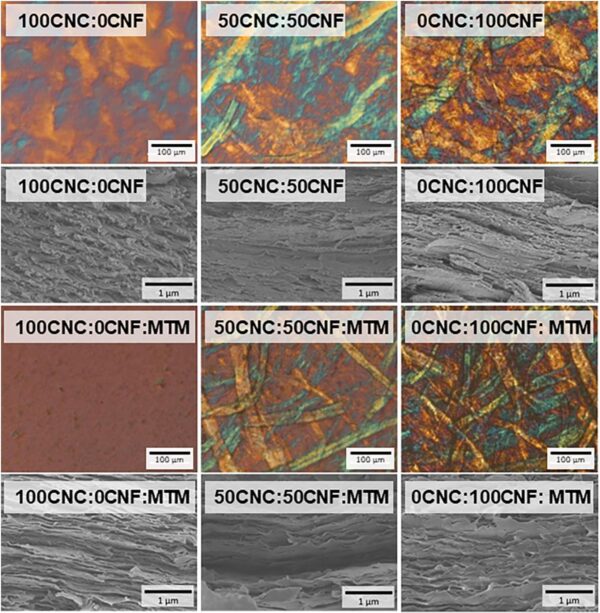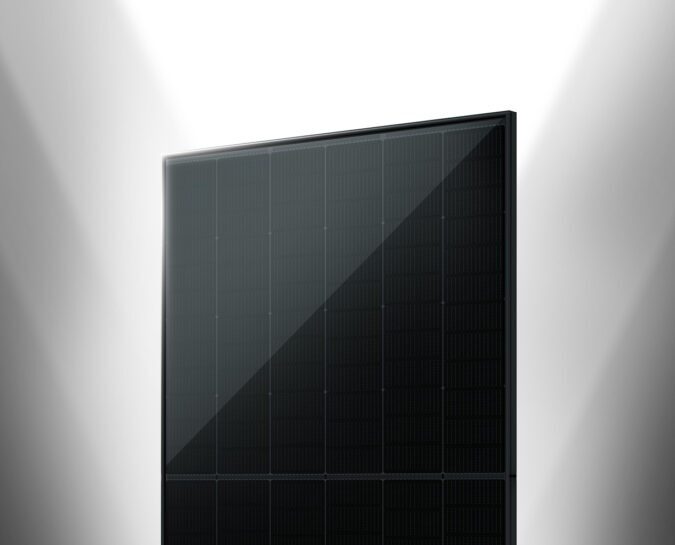An international group of researchers has developed an eco-friendly multifunctional nanocellulose (NC) hybrid film for both PV and packaging applications.
In the context of PV, the ability to adjust the film’s light scattering, or haze, can be useful for light management and as a protective system against light effects. Nanocellulose is a cellulose material processed to the nanoscale and typically derived from plants, algae, or bacteria.
“This study was developed in the application contexts of packaging and solar cells, where key properties are crucial for the performance of these materials,” the team explained. “For instance, an ideal packaging film material should exhibit sufficient mechanical and barrier properties. Optical transparency may not be required, whereas features such as water resistance might be essential. On the other hand, for solar cell substrates, the critical requirement is high transparency, followed by adequate mechanical properties, low roughness, and water resistance.”
Different combinations of cellulose nanocrystals (CNC) and cellulose nanofibrils (CNF) were tested in the manufacturing of the films, namely at mass ratios of 100:0, 75:25, 50:50, 25:75, and 0:100. In addition, all these mixtures were also tested with a nanoclay known as montmorillonite (MTM). The films containing MTM consisted of 50:50 cellulose (CNC: CNF): MTM by mass.
“Films (25 g⋅m-2) consisting of CNC and/or CNF, with and without MTM, were prepared by solvent casting. The suspensions were stirred overnight, poured into polystyrene Petri dishes, and dried at 23 C in a 50% relative humidity (RH) environment,” the group explained. “After air drying at 23 C and 50% RH, all the films were dried for an additional one hour at 150 C. One film from each system was placed in a frame to dry under tension, first at 23 C and 50% RH, followed by one hour at 150 C. The film dried under tension was used for subsequent mechanical analysis, where it is important that the films are not wrinkled.”

Image: University of Turku, International Journal of Biological Macromolecules, CC BY 4.0
After manufacturing the films, the academics tested them for a few abilities relative to whether they were packaging or PV applications. Namely, they were tested for physical characteristics, tensile properties, water interaction, optical properties, color stability under artificial sunlight, and surface morphology.
Compared to the combinations that included MTM, CNC: CNF films without MTM showed better potential for optoelectronic applications due to higher transmittance of over 80% at 550 nm. They also had good smoothness, with a root mean square (RMS) roughness of 17 nm, 89 nm, and 91 nm for CNC: CNF ratios of 100:0, 25:75, and 50:50, respectively.
“The hybrid films presented transmittance above 60% and haze varying from 5% to 60% at 550 nm, which can be beneficial for light management,” the academics also added, referring to their potential PV applications. “Films with MTM presented UV protection of up to 250 nm and swelling resistance of 28–53%, which could also benefit optoelectronics by increasing their lifespan.”
Their findings were presented in “Multifunctional nanocellulose hybrid films: From packaging to photovoltaics,” published in the International Journal of Biological Macromolecules. Scientists from Finland’s University of Turku, Sweden’s RISE Research Institutes of Sweden and KTH Royal Institute of Technology, China’s Zhejiang University, Switzerland’s Swiss Federal Technology Institute of Lausanne (EPFL), and the Netherlands’ Wageningen University and Research have conducted the study.
This content is protected by copyright and may not be reused. If you want to cooperate with us and would like to reuse some of our content, please contact: editors@pv-magazine.com.



By submitting this form you agree to pv magazine using your data for the purposes of publishing your comment.
Your personal data will only be disclosed or otherwise transmitted to third parties for the purposes of spam filtering or if this is necessary for technical maintenance of the website. Any other transfer to third parties will not take place unless this is justified on the basis of applicable data protection regulations or if pv magazine is legally obliged to do so.
You may revoke this consent at any time with effect for the future, in which case your personal data will be deleted immediately. Otherwise, your data will be deleted if pv magazine has processed your request or the purpose of data storage is fulfilled.
Further information on data privacy can be found in our Data Protection Policy.